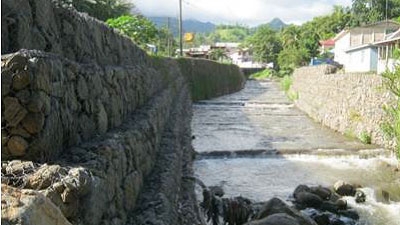Challenge
Historical data indicates that in the Eastern Caribbean, the regional probability of a hurricane in any given year is about 18%, underscoring the need for disaster risk reduction and emergency preparedness.
SVG’s vulnerability to natural hazards has been exacerbated by its deeply dissected topography, making the country prone to landslides and flash flooding. Furthermore, increased disaster events have resulted in significant expenditures, generally not accounted for in the national budget, thus constraining economic growth.
Hurricane Tomas took a heavy toll on the country’s socio-economic development, with significant damage to schools and community centers that are part of the national network of emergency shelters. Critical roads were cut by landslides or by the flooding of major rivers.
During and after the hurricane, community residents in certain areas were isolated and shelter facilities were damaged or inaccessible for several days. As a consequence, the impact of the hurricane was even more severe on the most vulnerable groups.
Solution
The Hurricane Tomas Emergency Recovery Project (HTERP) accelerated the recovery of critical infrastructure following Hurricane Tomas. The project retrofitted schools, community centers, road and river defense infrastructure that were heavily impacted by Hurricane Tomas, and also made provisions for advancing risk analysis skills and tools used by the government for hazard mapping.
The investments under the HTERP focused on increasing the resilience of physical infrastructure, while including functional considerations, for instance introducing gender-specific restrooms for reducing gender-based violence and improving disabled access at shelter facilities.
Under the project, civil works targeted areas with the highest levels of poverty, hence most vulnerable to natural hazards. Moreover, the HTERP recognized the importance of enhancing institutional capacity in order to improve post-disaster responsiveness as a framework for encouraging mitigation and risk planning complimentary to the country’s response mechanisms.
